People
Peer Inside the Otherworldly Studio of Andra Ursuţa, a Sculptor Who Transforms Horror-Movie Props Into Eerie Totems
"The throwaway, cheap props that the culture uses to express its fear—I love to use those kinds of things," Ursuta says.
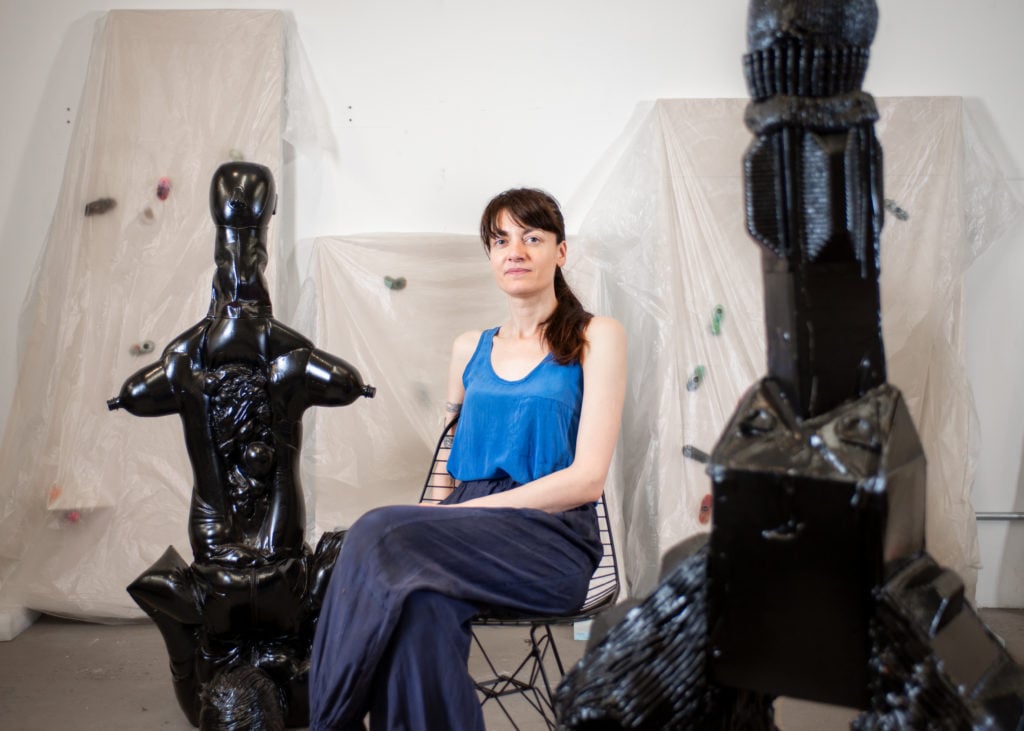
"The throwaway, cheap props that the culture uses to express its fear—I love to use those kinds of things," Ursuta says.

Taylor Dafoe

Andra Ursuţa’s studio is sandwiched between a 3D-printing startup and a parking garage for New York City garbage trucks, making for a distinct set of smells wafting in and out. It’s an oddly fitting spot for the Romanian-born sculptor, whose work merges surreal techno-realities with the grotesquerie of everyday life.
Indeed, both neighbors played a part in Ursuţa’s newest body of work: a series of human-sized, semi-translucent vessels, which she considers self-portraits. Each is a kind of Frankensteinian monster—an amalgam of garbage and appendages from the artist’s own body which she 3D-scanned and cast into glass through a laborious process that mixes centuries-old techniques with of-the-moment technology.
One of them, a reclining figure, has a bottle for an arm and feet that are made from the head of the titular creature from the 1987 movie Predator. Another positions a likeness of the artist’s own head—wearing a mask from Alien—atop what looks like the base of a blender.
The works made their debut earlier this year at the Venice Biennale, where Ursuţa was included in Ralph Rugoff’s “May You Live in Interesting Times” exhibition. Now they’re on view as part of her show “Nobodies” at Ramiken gallery in Brooklyn, through December 21. (While the gallery is being renovated, Ursuţa’s show actually appears in a vacant raw space on a floor above.)
On a recent afternoon, Artnet News visited Ursuţa’s studio in Brooklyn to see her new works and talk about how she made them.
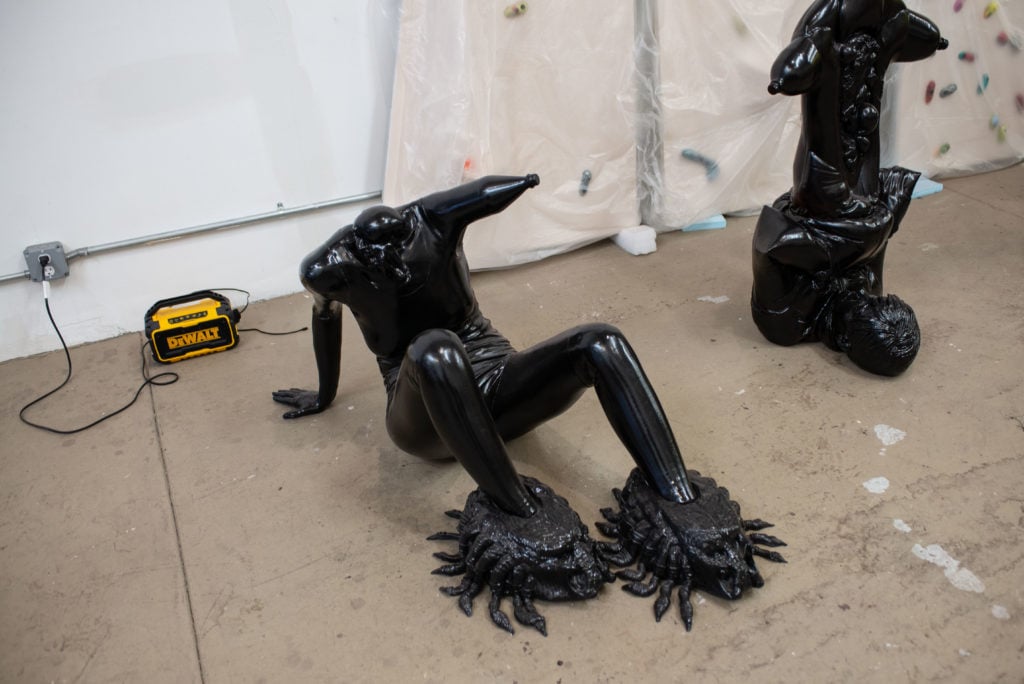
Andra Ursuţa’s studio. Photo: Taylor Dafoe.
The setting for “Nobodies,” essentially a construction site, is non-traditional to say the least. But it also feels right for that reason.
I think that this particular situation is kind of perfect. It’s even better than Venice. It’s a very big, empty space. It’s so big that it almost feels like you’re outdoors, kind of like being in a park. So the works are bottles, but they’re also like statues and that’s more obvious this time around. And the show is on a construction site. To get to this building, you have to cross these train tracks. Across the street, there is a demolition site where they grind down construction materials day and night. So all the garbage we’re producing is being ground to dust directly across the street from the show—I couldn’t have wished for something better, honestly.
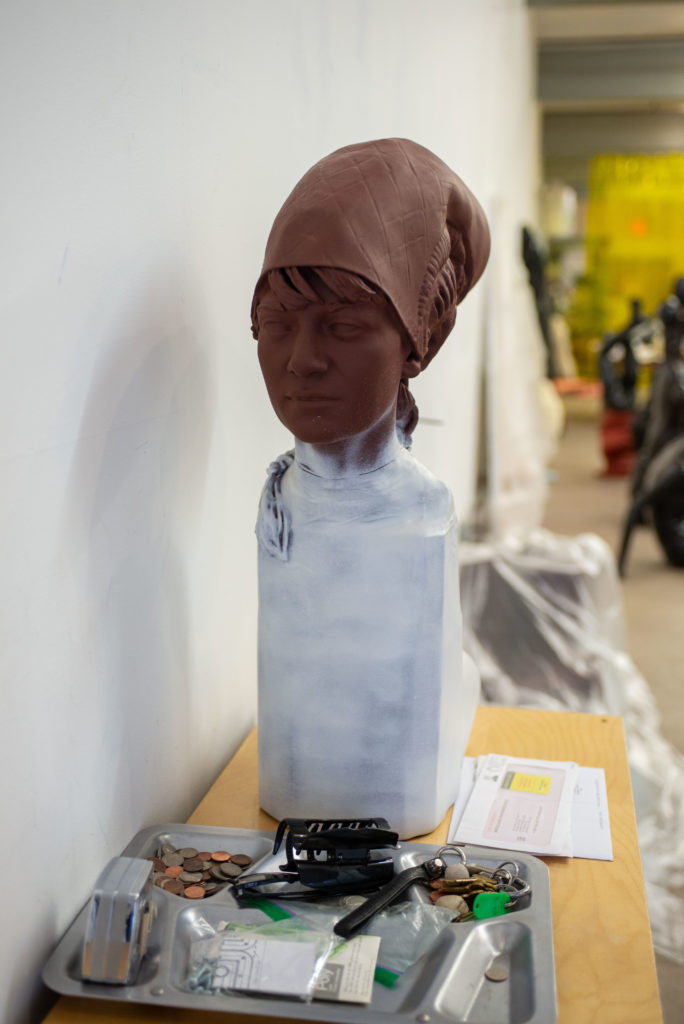
Andra Ursuţa’s studio. Photo: Taylor Dafoe.
I’m interested in how these rather ad-hoc assemblages of found items are transformed into your pristine glass sculptures. What does the process behind these sculptures entail?
They started out with trash that I had around the studio and old clothes of mine, or even, in some cases, fragments of props that I used in older works that I recycled. Then I filled them out with different kinds of foam and scanned them with a 3D-scanning program. I also scanned my body and face and with the 3D-modeling program we created this new hybrid between the scans of the physical sculptures and just the body as it is. So it’s kind of like drawing from nature. Once the form is finished in the program, we cut it into multiple pieces so that we could cast it in glass. Those pieces were then printed in nylon, and we made a mold of each part. We had to make waxes for each piece and then they were cast in glass. It’s a very old school process that’s similar to the lost wax casting technique—a very traditional way of making sculptures. So the work goes from being detritus to being very synthetic. It’s like going from analogue to digital back to analogue. It’s a process that confuses the moment in technology that created it, fusing both new and old techniques.
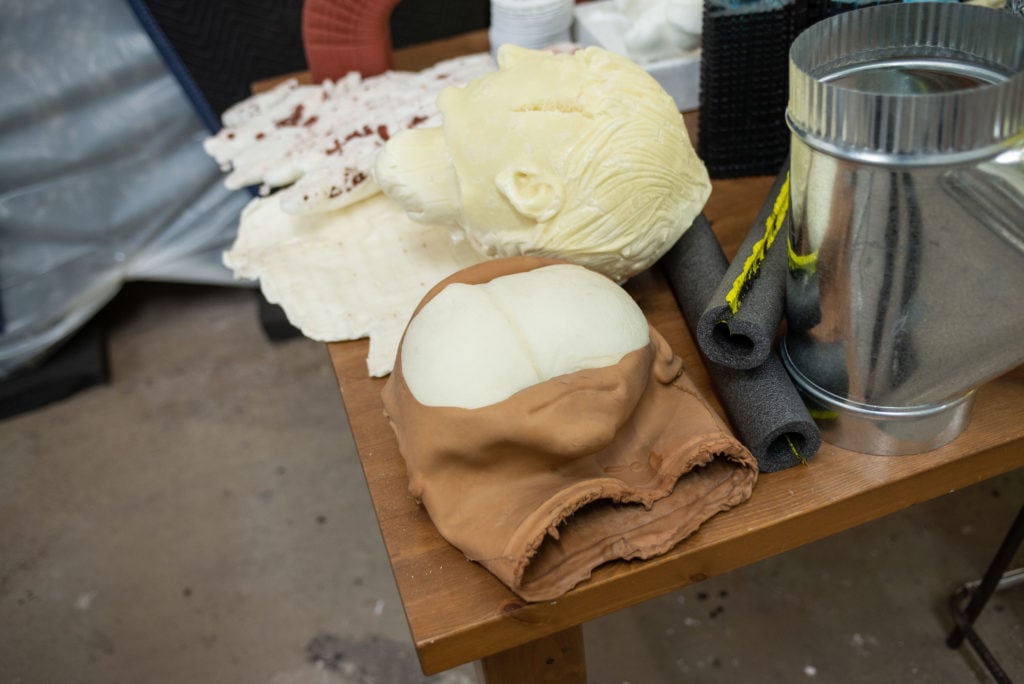
Andra Ursuţa’s studio. Photo: Taylor Dafoe.
Your current studio is next to a 3D-printing company, whom you worked with on this new body of work. Was it a happy coincidence that you set up shop next to this company, or was it something you were seeking out?
I had the idea to make these sculptures back in 2013 or 2014, but I couldn’t find a way to actually make them. I thought about 3D printing, but I didn’t have any experience with it and I didn’t know where to start. So when I moved to the new studio I just asked my neighbors to show me what they do. I realized that that was the process that would help me bridge the gap—to go from a solid sculpture to a hollow glass object. The hollowness is very important for many reasons—it was also the hardest thing to achieve.
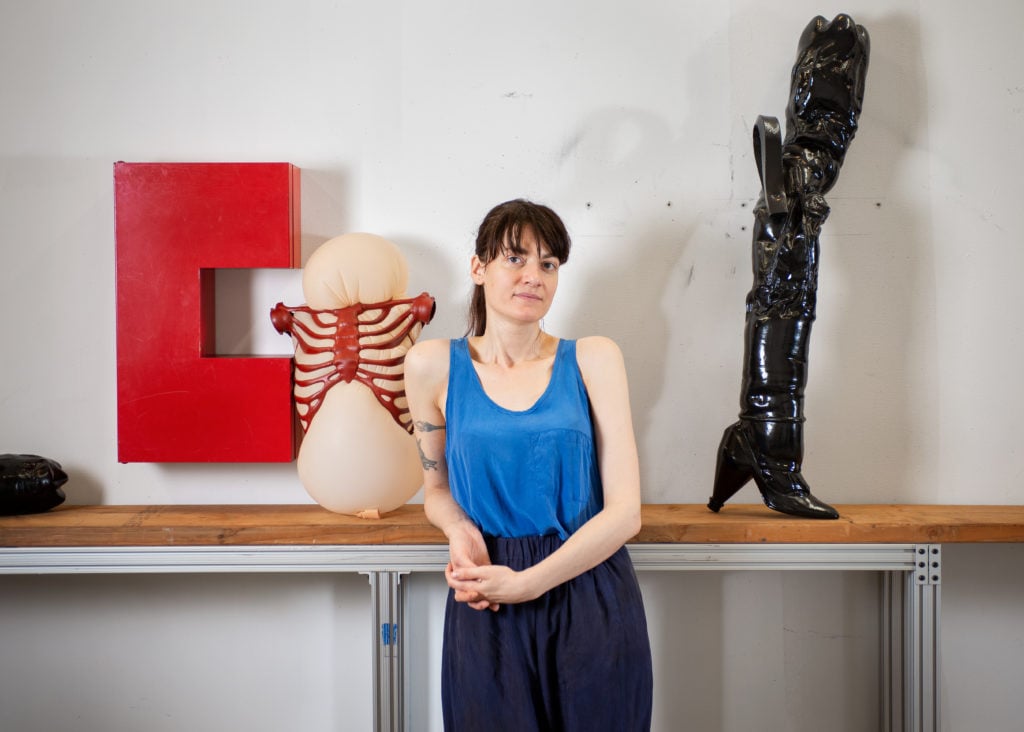
Andra Ursuţa in her studio, 2019. Photo: Taylor Dafoe.
Because these works are self-portraits, that sense of hollowness is especially charged. What is the significance of that gesture to you?
Quite literally, they are bottles. So every sculpture is figurative—that’s a given—and is also a vessel that could potentially contain a liquid. It’s an aesthetic object but it also has a practical function. To me, it’s a way of undercut the sanctity of the sculpture. It’s a bit like making fun of sculpture and making fun of art and making fun of yourself—I always like to undercut things with moves like that. Conceptually, all these works are self-portraits. As a body of work, I see them as being about getting older or arriving at a point in your life when you realize that not everything is possible anymore, that not everything is ahead of you, that maybe some roads have been closed off. The glass is half empty rather half full. [Laughs] That kind of thing. When I put liquid in them, they were never full. It was just a little bit at the bottom. It suggests this idea that you’re late to the party in a sense. The best stuff has happened already.
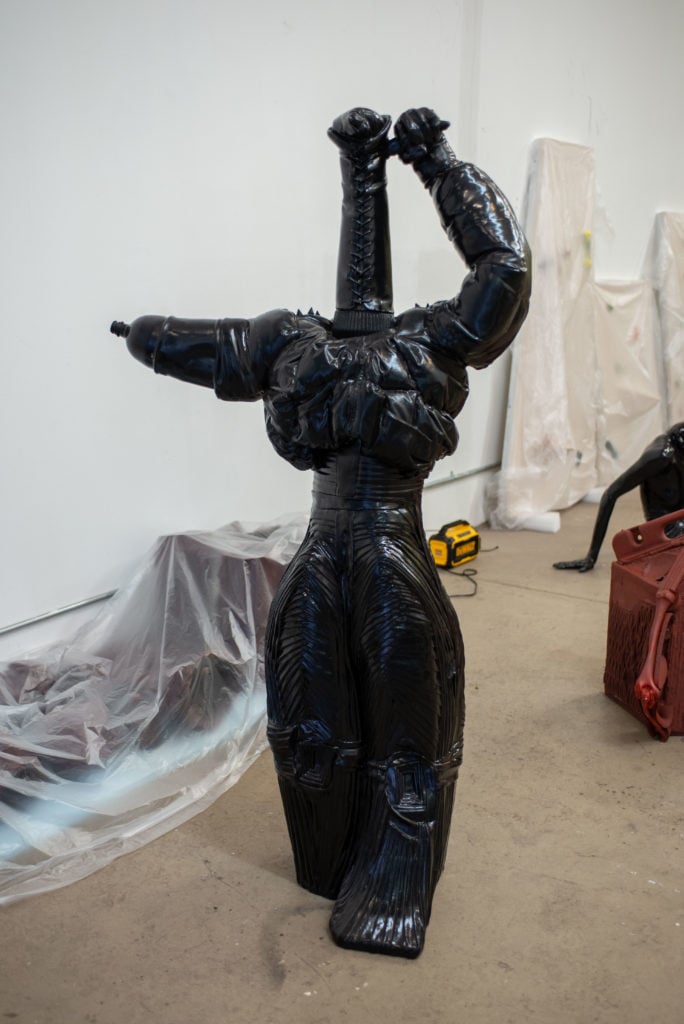
Andra Ursuta’s studio. Photo: Taylor Dafoe.
In Venice, you poured alcohol in them. Will you do that again this time around?
I actually haven’t decided yet if these works will have alcohol in them or not. In the first version, shown in Venice, most of the sculptures were clear and it kind of created this beautiful staining effect. But when you use color in glass, like I did for these versions, you can’t always control the results; it’s hard to anticipate what they’ll look like. The colors turned out so crazy that I’m not sure yet if filling them with liquid will be necessary. I think that’s going to be the last step—once the pieces are installed, I will make that decision.
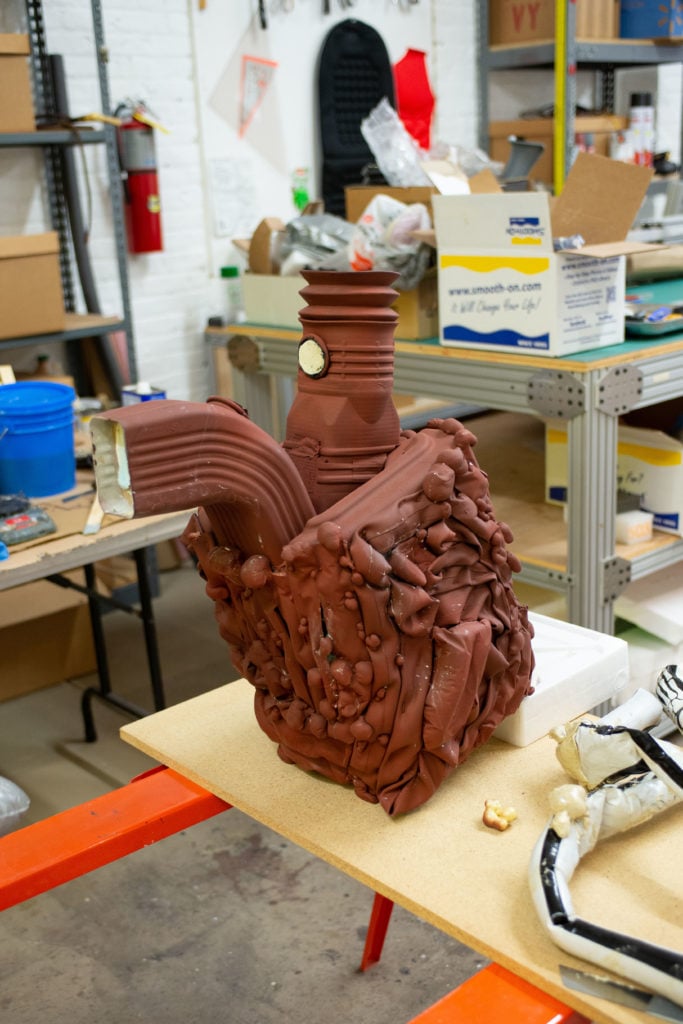
Andra Ursuta’s studio. Photo: Taylor Dafoe.
Bondage, monsters, spiritual totems, your own body—there are a lot of loaded symbols in these works. The language feels very deliberate.
There’s the element of studio trash, and then there’s the cultural trash. There’s a lot of fake scary props that are processed into the sculptures. I use latex masks from the Halloween adventure store—there’s an alien and a Predator head. The throwaway, cheap props that the culture uses to express its fear—I love to use those kinds of things. I love that they are disposable, that they’re kind of like trash, but then, through these very elaborate processes, I can turn them into something that’s going to last for a very long time. That’s the idea, to take something very low culture and treat it with reverence.
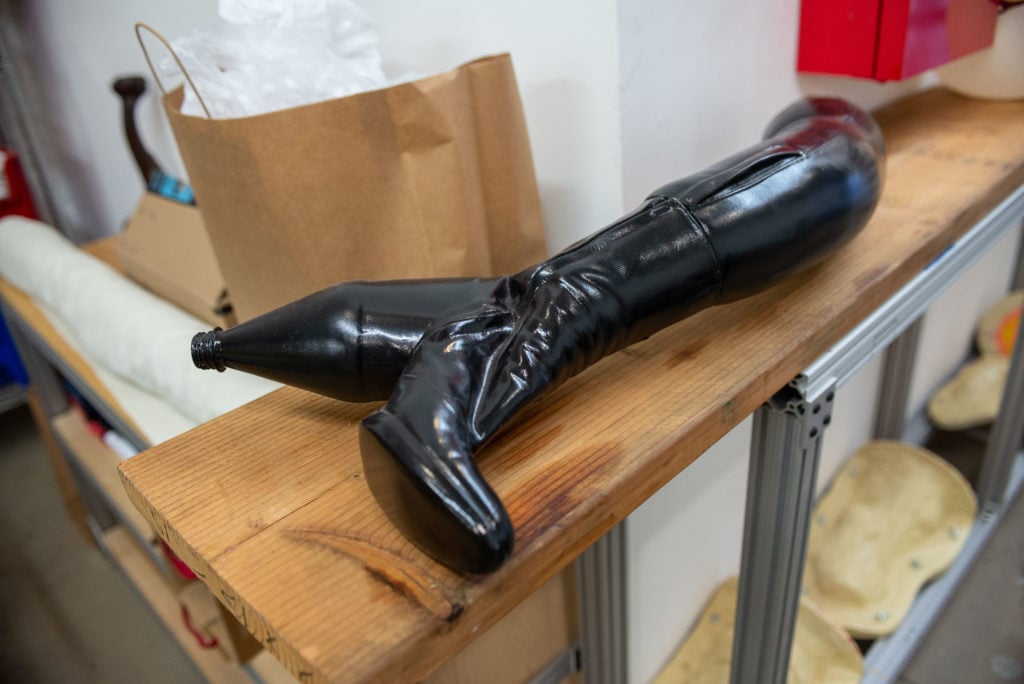
Andra Ursuta’s studio. Photo: Taylor Dafoe.
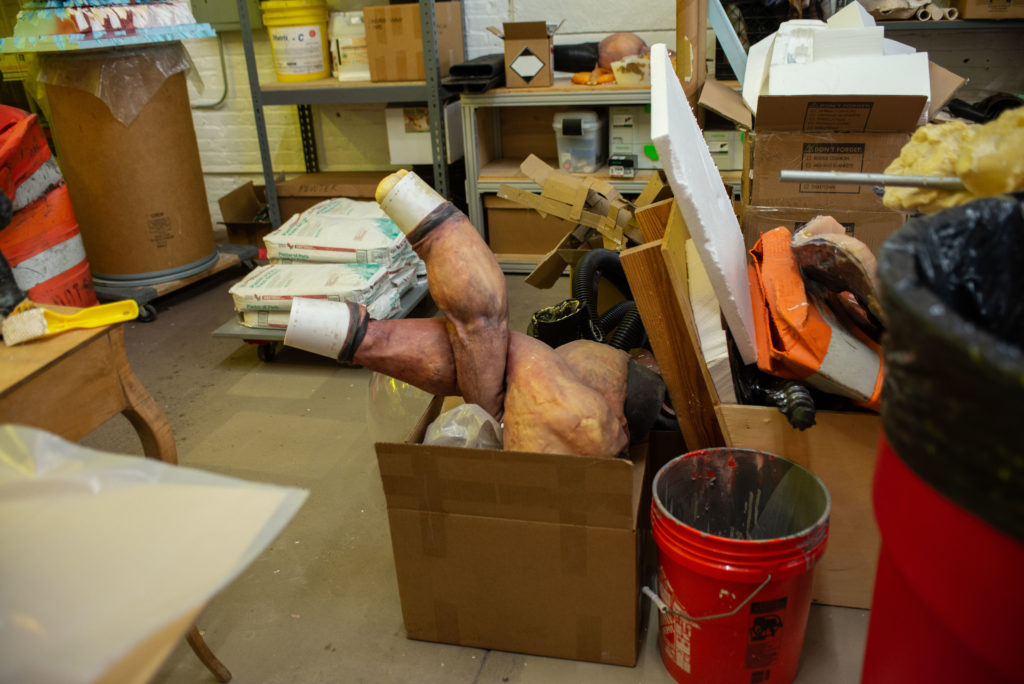
Andra Ursuta’s studio. Photo: Taylor Dafoe.
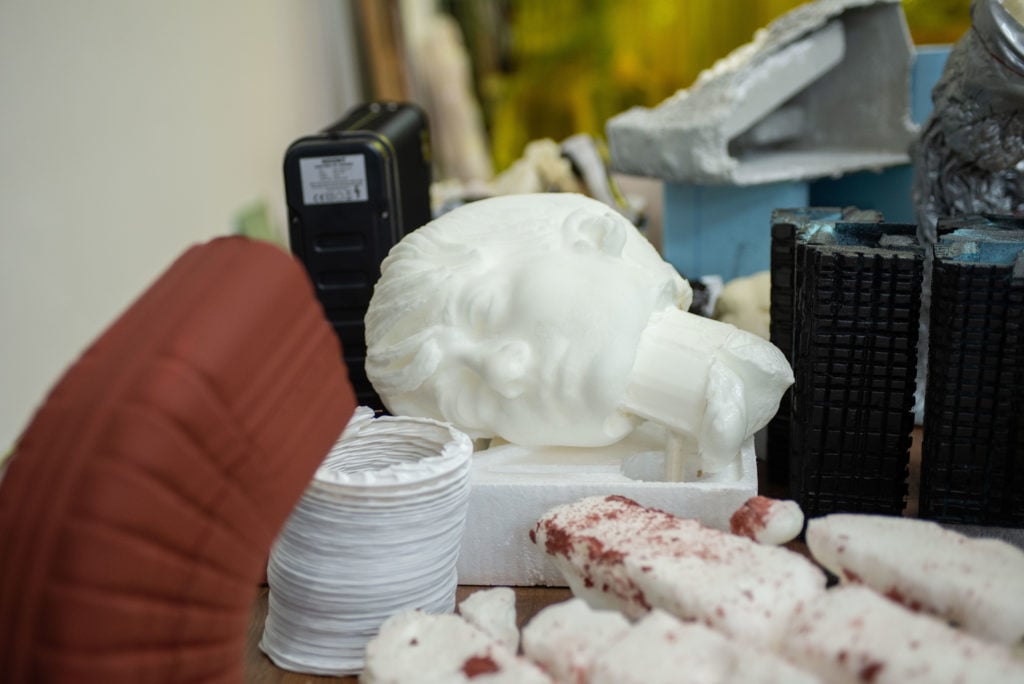
Andra Ursuta’s studio. Photo: Taylor Dafoe.
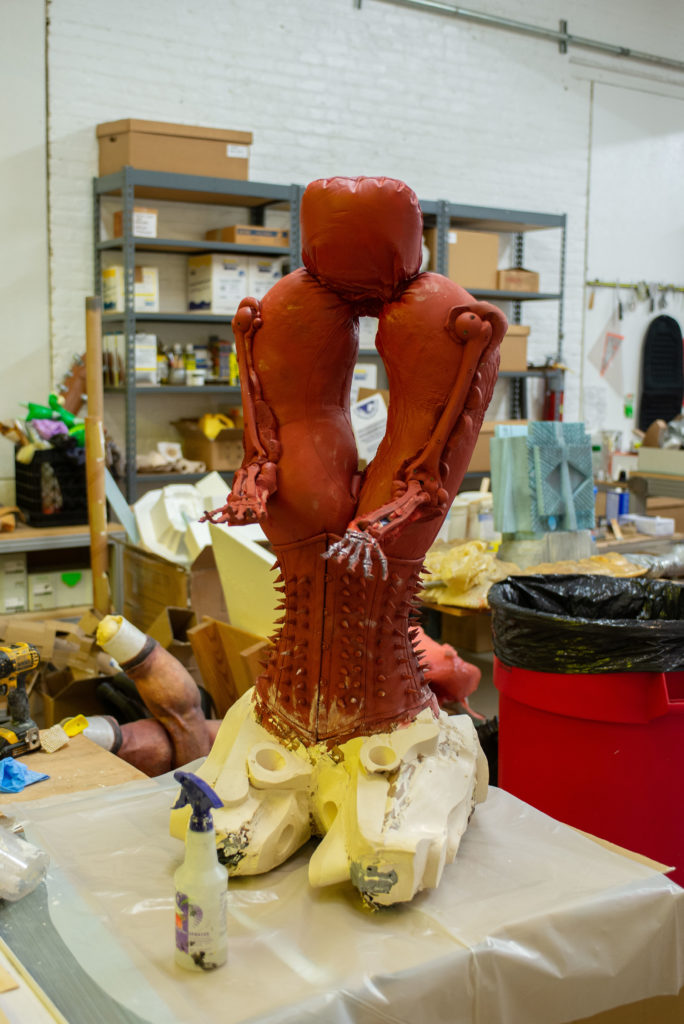
Andra Ursuta’s studio. Photo: Taylor Dafoe.
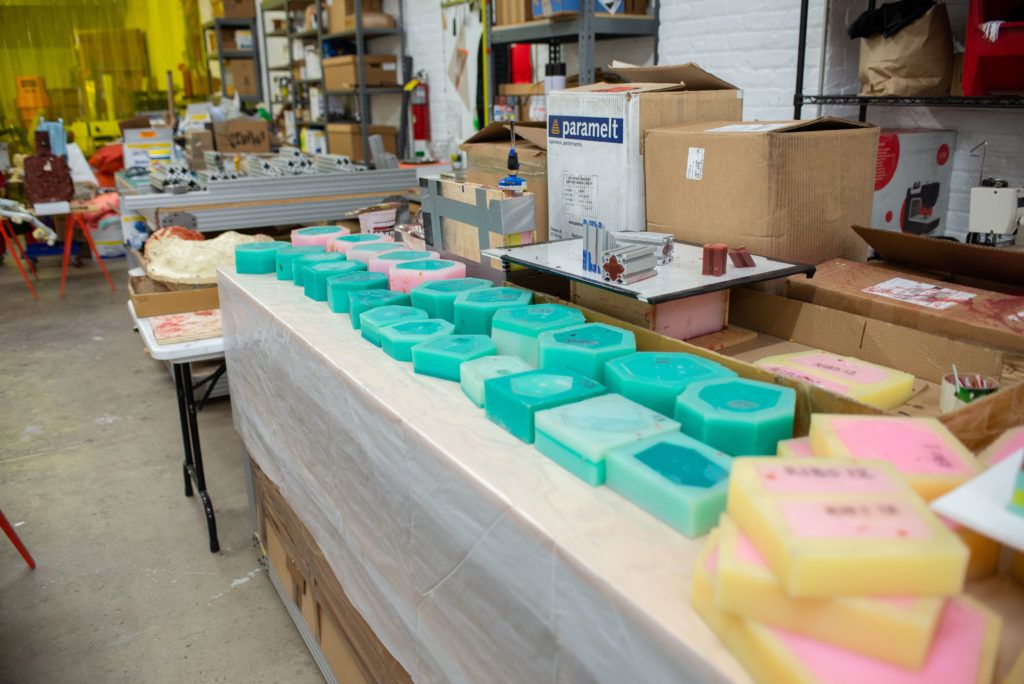
Andra Ursuta’s studio. Photo: Taylor Dafoe.
“Andra Ursuta: Nobodies” is on view at Ramiken through December 21, 2019.